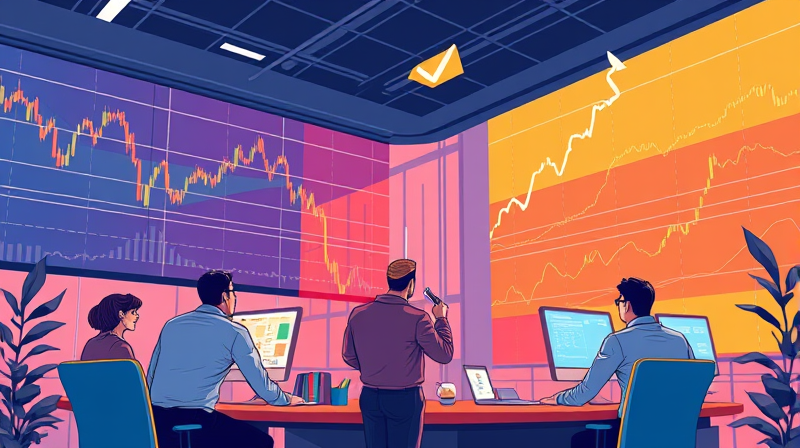
As global markets navigate a landscape marred by tariff uncertainty and persistent inflation fears, institutional investors have quietly shifted into defensive gear. The first half of 2025 saw a pronounced rotation away from riskier assets and toward safety, signaling a cautious stance that could shape portfolios for months to come.
Institutional fund flows during Q1 and Q2 of 2025 reflect a market grappling with multiple headwinds. Heightened geopolitical uncertainty, centered on looming trade tariffs, collided with stagflationary concerns—the fear of slowing growth paired with stubbornly high prices. Against this backdrop, the State Street Risk Appetite Index, a key barometer of professional sentiment, dropped to -0.09 in March before rebounding to a neutral level in April and climbing to +0.36 by May.
That minor recovery followed a brief market respite after tariff delays, but it did little to erase the broader defensive positioning. Institutional investors trimmed equity holdings and bolstered allocations to bonds and cash, signaling a preference for yield and capital preservation over aggressive growth.
The rotation can be dissected by asset class to reveal the strategic underpinnings of professional flows:
Beyond broad asset classes, sector-level positioning underscores a clear defensive bias. Deutsche Bank’s analysis for Q1 2025 highlights how professional flows gravitated toward quality industries:
Institutional flows into equity ETFs and mutual funds slowed sharply to $5.9 billion weekly, while fixed income inflows remained robust at $13.4 billion. This split paints a picture of investors favoring the safety of bonds over the growth potential of stocks.
While institutions cut back, retail investors demonstrated a starkly different appetite. US ETF flows propelled by retail reached over $500 billion in early 2025, as individual investors “bought the dip.” This behavioral divergence reflects varying time horizons and risk tolerances: professionals prioritized capital preservation and yield, whereas retail participants chased potential rebounds.
Several factors underpin this strategic shift:
Collectively, these drivers fostered an environment where quality, stability, and yield trumped high growth potential. The measured retreat from equities was neither panicked nor wholesale; rather, it was a calculated redeployment into defensive instruments.
For asset managers, the defensive tilt presents both challenges and opportunities. Firms that can offer specialized fixed income strategies, high-quality sector exposures, and customized risk-managed solutions stand to benefit. At the same time, product lines tied to high-growth or cyclical sectors may need to adapt or face outflows.
Client communication also becomes paramount. Clear explanations of tactical shifts and the rationale behind defensive positioning can maintain investor confidence during periods of uncertainty. Transparency on duration risks, credit quality, and sectoral allocations will help align expectations and reduce churn.
As we move into the latter half of 2025, institutional investors will continue weighing headwinds versus market opportunities. Key considerations include:
By staying agile and maintaining a disciplined, research-driven approach, institutions can navigate volatility while preserving capital. Defensive positioning need not equate to stagnation; it can serve as a stable foundation from which to pursue selective growth when conditions improve.
In an era defined by policy uncertainty and market headwinds, understanding the signals embedded in fund flows is crucial. Those who heed these cues and adapt portfolios accordingly will be best positioned to thrive, regardless of what 2025 and beyond may hold.
References













